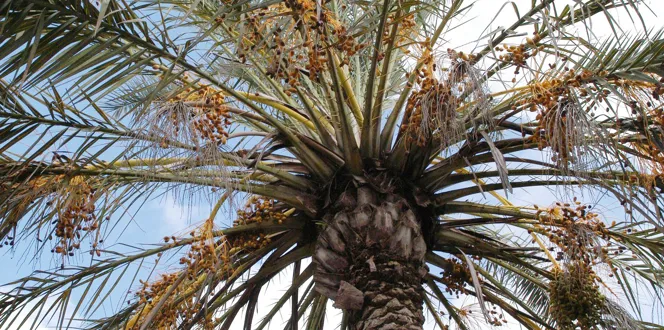We’re used to seeing palm trees flowing carefree in a breeze with a golden sun and blue skies as their backdrop.
But in some areas, palms don’t get to soak up paradise all year round. Take Florida, for example. Allison, a Davey blog reader from the northern half of the state, reached out for help with her freeze damaged palm trees. She said, “we had a hard freeze in Florida and our medium palms took quite a hit. I don't know if I should prune them down to nothing or let them be. I also don't know if they are still alive.”
Harsh winter weather can be tough on these tropical trees. Read on to learn how to help them bounce back.
How to Help Freeze Damaged Palms and Protect Palms from Freezes
With careful prep before and lots of patience after, some palm trees can survive a wicked-cold winter.
A cold freeze looks like it damaged my palm (areca, sabal, pindo, pygmy date, and coconut). What happened?
A visit from Jack Frost will have palm trees switch from leafy green to rusty brown before your eyes. Why is that?
Well, unlike hardwood trees that sprout new growth from multiple spots, palm trees only grow new leaves from one spot—the heart. The palm heart sits right in the center of the tree’s canopy, and if it’s hit with harsh cold, the damage trickles down to all the future palm leaves growing from it.
Plus, if a palm is planted outside of its growing zone, it’ll be extra vulnerable to cold damage. For example, pygmy date palms are meant for planting zones 9-11, areas that get almost no frost. That means they wouldn’t do so well in Allison’s neck of the woods in Northern Florida. The same goes for areca and coconut palms—frost can be fatal for these quintessential tropical trees.
But even if palm trees are tolerant to the cold (like pindo and sabal palms, which can bear 15- and 20-degree temperatures) a hard freeze can still spell trouble. No matter the type, always err on the side of caution with your palm trees. It’s really important to protect all palm trees whenever harsh winter weather is expected.
How can I tell if my cold damaged palm trees are alive?
By far, the best way to determine the health of your tree is to get an arborist’s opinion. In the meantime, here are a few things to consider:
- Your tree needs time. It’s really hard to predict the future of a freeze damaged palm. Most palms won’t show any new growth for months after the damage was done, so patience is the best gift you can give your recovering tree.
- Green is good. Even if leaves are mostly brown, any sign of green could mean the tree has a chance at survival.
- Let nature take its course. Let your palm tree handle the healing process on its own. You may remove fronds that are completely brown to improve aesthetics.
How can I protect palm trees from freezes in the future?
Palms have a much better chance at surviving a winter freeze with these preventative steps:
- Always plant palms that are suitable for your area. Find out what your planting zone is here!
- Carefully cover short palm trees with a blanket or sheet before an expected freeze. For taller palms, contact an arborist to wrap the fronds together to protect the heart. Remove the sheet and unwrap the fronds after the threat of freeze.
- Before a freeze, water your palm tree deeply, and seal in the moisture with mulch.
- Keep your tree on a regular fertilization schedule. The nutrients in fertilizer may help support cold tolerance by improving tree vitality.





